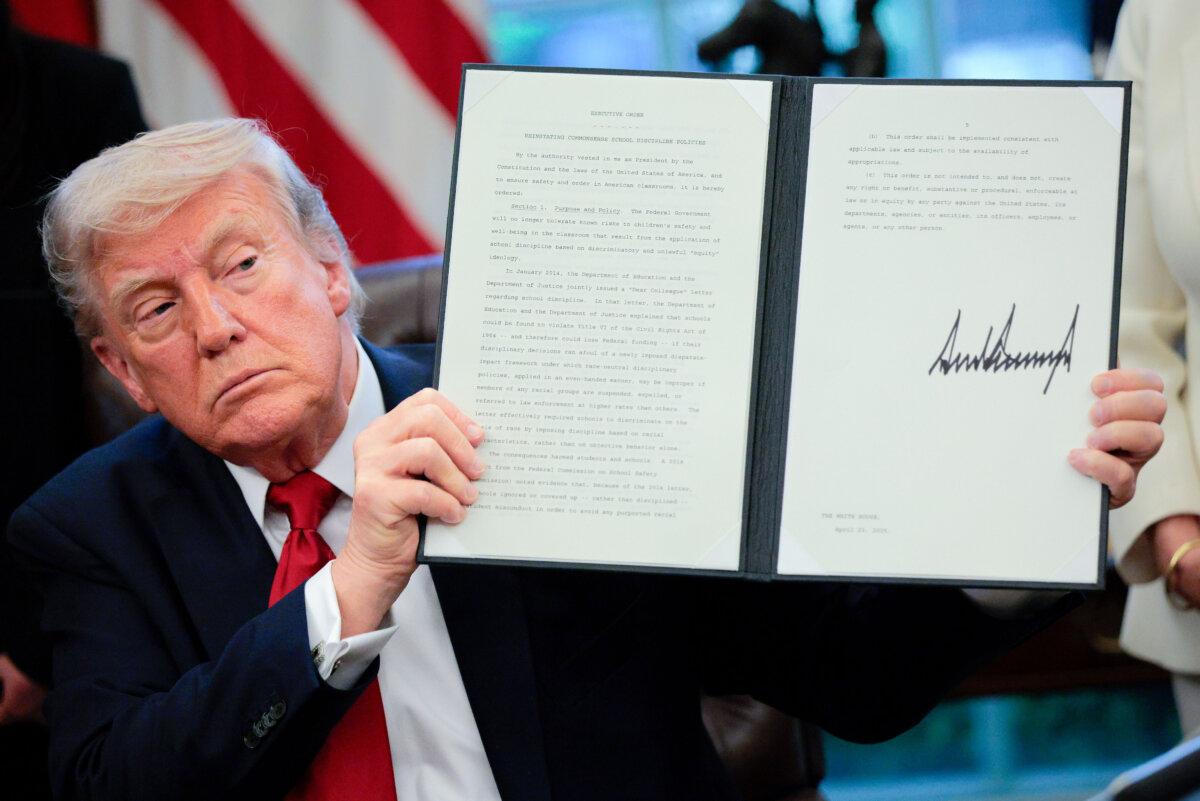U.S. President Donald Trump has faced an onslaught of challenges to his agenda since returning to office, some of which have reached the nation’s highest court and could ultimately shape the legal landscape of the United States.
Over 100 lawsuits have been brought against the Trump administration, with 10 of them having reached the Supreme Court so far.
One major point of concern for critics and judges regarding Trump’s agenda is that they argue he is overreaching the limitations of presidential authority, thereby violating the separation of powers.
The separation of powers is a fundamental component of the United States government, characterised by a system of checks and balances.
Traditionally, the legislative branch—Congress—makes laws, the executive branch—the president—enforces them, while the judicial branch—the Supreme Court—interprets them.
Since Inauguration Day, Trump has signed 130 executive orders (EOs), more than any president in history during their first three months in office. President Joe Biden signed 162 EOs during his term, and President Barack Obama signed 277 EOs during his eight years of office.
Trump signed 220 during his first term from 2016 to 2020.
An EO is a directive signed by the president, ordering the government to take a specific action. However, EOs cannot override federal law and statutes created by Congress, and this is where the line between law and presidential authority can sometimes become blurred.
On April 7, Trump received a Supreme Court win allowing him to continue deporting members of a Venezuelan gang, Tren de Aragua, to a high-security prison in El Salvador using a controversial wartime law named the 1798 Alien Enemies Act.
Used only three times in history, it allows for the deportation of foreign nationals who are actively invading a country, which Trump argued is what they have done.
Initially, a district judge attempted to halt the deportations, arguing that the United States was not at war and that the individuals had a right to a fair trial. This ultimately made its way to the Supreme Court, which ruled that the deportations could continue, but individuals must be notified in advance.
A separate ruling on April 10 involved the return of deported Salvadorian Kilmar Abrego Garcia, accused of being a member of the MS-13 gang, who was deported to El Salvador while under a protection from removal notice. This transfer is still in process.
The deportations come as part of one of Trump’s campaign promises to curb the significant increase in illegal immigration in recent years.
Three separate cases involve limiting birthright citizenship, which grants instant citizenship to anyone born on American territory, regardless of their parents’ nationality, as enshrined in the 14th Amendment of the U.S. Constitution.
On April 17, the Supreme Court placed a temporary lower court block on this appeal, with a hearing set for May 15.

Another part of Trump’s campaign promise was to shrink the government’s $36 trillion debt, and remove diversity, equity, and inclusion programmes (DEI) from government, both of which have led to numerous legal challenges.
Critics have argued that Trump doesn’t have the authority to redirect funds without approval from Congress. But the Trump administration maintains that this is an issue of government contract disputes, which falls under the purview of the Executive Department.
The Supreme Court agreed on April 4 to hold off on millions of dollars in grants for the Department of Education owing to concerns over DEI.
A loss for Trump came with the Supreme Court ordering the restoration of funding for the United States Agency for International Development, an agency established to provide welfare assistance to other countries, which the Trump administration had argued didn’t align with America’s interests.
The firing of federal employees has been another contentious issue with unions, which argue Trump has violated federal law by not providing a reason for their dismissal.
This led to a win for Trump in the Supreme Court, which ruled in his favour.






